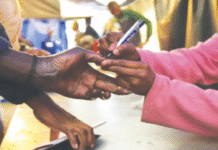M. Serajul Islam
In the first week and a little more of the Shahabag movement, when the youth-led uprising was promising to take the country to a new and better level of well being, there was enthusiasm in some quarters in Bangladesh and in interested circles in nextdoor India that Bangladesh was finally putting its act together towards becoming a truly secular country.
Those active in these discussions in Bangladesh are the leaders of the country’s secular movement who believe and want the rest of the country to believe that the main reason why so many lives were sacrificed in 1971 was to establish Bangladesh as a secular country where religion (meaning Islam, the religion of the overwhelming majority of Bangladeshis) will have no role in public affairs and politics.
The activists of the secular movement in Bangladesh argue that the two-nation theory that used religion to create in 1947 a Hindu majority India and a Muslim majority Pakistan (of which Bangladesh was a part) has been rejected in 1971 when Bangladesh emerged as an independent country based on secularism.
The leaders of the secular movement in Bangladesh, who were unhappy that even after the 15th amendment the country still had both the provisions of Islam as a state religion and “Bismillah” in the Constitution, were excited about Shahabag.
Beginning of new liberation war
They saw an opportunity in the Shahabag Prajanma movement for their secular agenda, particularly in forcing the government to delete the Islamic provisions from the Constitution. They described Shahabag as the beginning of the new liberation war to finish the unfinished 1971 war of liberation whose objective is to reject the two-nation theory and establish Bangladesh as a sovereign country where religion would have no significance in the lives of its people except in private.
This view that 1971 war of liberation of Bangladesh rejected the two-nation theory has been supported wholeheartedly in India because it never accepted the 1947 partition of India. It was therefore no surprise that India was the only country to give the Shahabag Movement its blessings.
Breaking protocol and diplomatic niceties, the Indian Foreign Minister Salman Khurshid personally visited Shahabag while on an official visit to Bangladesh and gave it his Government’s blessings at a time when the movement had started to become overtly pro-ruling party and equally overtly anti-BNP. The Indian President on his state visit to Dhaka early in March said his heart was with the Shahabag youth and he felt sad he was unable to be there personally.
The move from Shahabag to fight and win the second liberation war to complete the unfinished task of 1971 for establishing secularism so that it is not tarnished by Islam faltered when the anti-Islamic blogs became public knowledge resulting in widespread public anger. The result was the Hefazat phenomenon where many times more people than the Shahabag youth could muster gathered in Shapla Chattar, condemning and demanding hanging of the anti-Islam bloggers.
The way the authorities tackled the Hefazat phenomenon is still not clear with the government’s claim that it fizzled without serious bloodshed, contested by Hefazat members and the opposition that claimed hundreds of Hefazat men were massacred to drive them away at dead of night — approximately 2-40 AM at Motijheel where electricity supply line was cut off from the evening that night.
Major newspapers reported quoting a police spokesman after a combined force of some 10,000 riot police, anti-crime Rapid Action Battalion and paramilitary Border Guard Bangladesh (BGB) troops carried out the operation.
Nevertheless, the Hefazat reaction to the Shahabag underscored the fact that those who had thought that Islam could be contained in the four walls of people’s homes did not understand the extent and depth of people’ attachment to the religion in Bangladesh.
The government was the first to fear the Hefazat uprising after it had seen the huge gathering of Hefazat followers in Dhaka on April 4th. Government Ministers held meetings with Hefazat and assured them that the government would consider their 13 point demands although there were elements in the demands that the ruling party with its secular stance on politics should have rejected outright.
Although there was widespread concern and fear in the minds of the majority of the people of the country to see so many Islamic fundamentalist gather in Dhaka, there was nevertheless also a feeling among them that the youth in Shahabag had gone too far with their attitude towards Islam. The people in general did not believe that the youth in Shahabag were either atheist or against Islam, nevertheless they felt that the Shahabag youth did not show Islam the respect that they expected. They suspected that behind the youth leaders in Shahabag, there were a few well know “secularists” who tried to use the movement that otherwise had so much potential to serve their agenda of secularism against Islam.
Secularism versus Islam
The debate between secularism versus Islam has been played out between the Shahabag Movement and the Hefazat phenomenon in a manner that should give the nation its sense of direction for the future. The people have lent their support unequivocally in favour of Islam by the way the Shahabag movement withered away.
Nevertheless, it is not fundamentalist Islam that the people have supported. They have supported the Islam that has been tampered by many liberal influences including Sufism, language, culture and tradition. In fact, while the debate raged in the country between secularism and Islam, the majority of the Muslims of the country did not for a moment lent their support for those who tried to use the opportunities offered to them by the anti-Islam bloggers for the fundamentalist brand of Islam. They clearly rejected Jamat and Hefazat for the politics they represented although they had their moral support for the Hefazat’s demand for punishment for those who humiliated Islam.
‘Mussalman’ and a ‘Bangali’
The people did in no way reject secularism either but not the secularism preached by those who do not see any place for Islam in public life of a secular Bangladesh. The people supported the secularism envisioned by Sheikh Mujibur Rahman who had many times, both before emergence of Bangladesh and afterwards, said publicly that our national identity is in being both a “Mussalman” and a “Bangali.” He saw no conflict between the two entities common in the lives of 90 per cent of the people of Bangladesh for a secular Bangladesh where all religions would have equal rights.
The secular movement leaders unfortunately saw a fundamental conflict between the two and tried to use the Shahabag Movement to fight a new liberation war for a secular Bangladesh to subordinate the “Mussalman” entity from all public and political matters. Ironically, it is the failure of the Shahabag Movement that has established the “Mussalman” element of the national identity of a Bangladeshi in full strength.
The developments in Bangladesh’s politics since February have unmistakably and indisputably established the “Mussalman” element of the national identity of its people that has forcefully destroyed the notion that the emergence of Bangladesh in 1971 has rejected the two-nation theory. The great divide of 1947 gave the people of Bangladesh space for fulfilment of the religious element of their national identity but none for fulfilment of their linguistic, cultural and liberal identities that Bangabandhu had aptly described as the “Bangali” identity.
In 1971, the people of Bangladesh achieved these elements to complete the process of achieving their national identity of being both a “Mussalman” (1947) and “Bangali” (1971). It is time the secularists take lessons so that Bangladesh can return from the abyss to which they had pushed the country by their attempt to undermine the Islamic basis of the country’s national identity.
————————————–
The writer is a retired career Ambassador.
Source: Weekly Holiday










Secularists should also stop spreading the notion that 1971 liberation war was fought to create a “secular Bangladesh”. It was a war of independence from Pakistani domination, plain and simple. Bangladesh has always been and will continue to be a land of Bengali Muslims. Thanks to Hefazat for driving this point home. May Allah (swt) grant the lives lost in the Hefazat movement their well deserved place in Jannat.